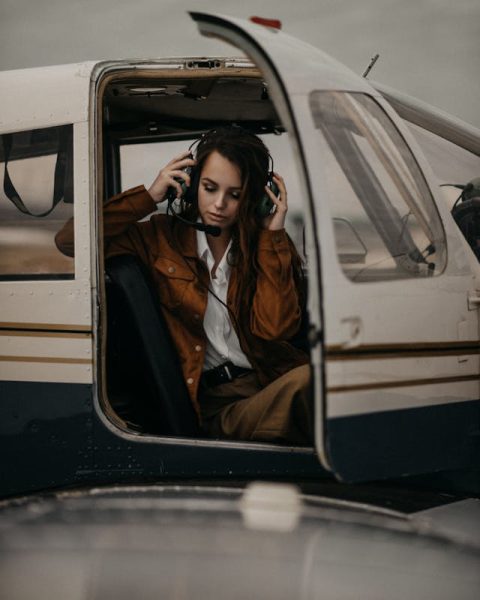The whir of propellers over the Spokane River and rolling pine-covered hills signals more than motion—it’s freedom measured in miles of open sky. For high-net-worth travelers, pilot certification is the ultimate travel upgrade, blending autonomy, privacy, and precision into every trip. Instead of waiting in crowded terminals or bending to airline timetables, certified pilots create their own routes, landing at secluded airstrips and remote mountain valleys that commercial flights can’t reach.
This is less about prestige than it is about control. In a world of shifting airline schedules, privacy concerns, and the lure of hard-to-reach destinations, the ability to fly your own aircraft turns disruptions into opportunities. A sunrise arrival at a private vineyard, a midday meeting in another state, or an afternoon at a lakeside lodge—each becomes a natural extension of personal freedom from the cockpit.
Access to Unique Destinations
Pilots can reach private airstrips and seaplane bases positioned beside alpine lakes shimmering in morning light, vineyard estates with rows of grapes stretching to the horizon, and coastal retreats bordered by untouched beaches. At a Felts Field flight school, instruction covers short-field, soft-field, and mountain flying, along with coordination with fixed-base operators and property owners for specialized access.
Sessions often involve approaches over tree-lined ridges or descents into narrow valleys, adapting techniques to the unique demands of each location. The capability to arrive within steps of a luxury lodge or secluded island villa transforms travel into an experience of direct arrival at extraordinary destinations.
Comfort and Safety in Your Hands
Cabins can be tailored with power seats, foldaway tables, club seating, and advanced sound insulation for focused work or uninterrupted rest. A low cabin altitude supports easier breathing on extended flights, while climate-controlled zones and intelligent baggage storage maintain comfort from takeoff to landing. Some layouts provide individual airflow vents so each passenger can adjust comfort levels during long cross-country flights.
Pilots manage logbooks, maintenance releases, and digital records through platforms like Flightdocs, while weather planning uses METARs, TAFs, and PIREPs. Direct oversight means every mechanical check and route decision meets personal safety standards, providing peace of mind and the assurance that each experience is tailored to exact expectations.
Blending Aviation with Business and Lifestyle
For executives and entrepreneurs, a pilot certificate turns travel into both a competitive edge and a lifestyle benefit. Personal departure times make it possible to attend a morning meeting in Seattle, visit a site in Boise by midday, and return home for a private dinner—all without the downtime of commercial travel. This flexibility blends business efficiency with leisure opportunities, allowing career demands and personal enjoyment to coexist seamlessly.
Each trip can be tailored to exact preferences. Ground transport meets the aircraft on arrival, catering matches specific tastes, and private conference rooms at fixed-base operators provide discreet meeting space. Secure storage protects important materials, while runway condition reports help maintain smooth operations. The cockpit becomes the point where efficiency, privacy, and comfort intersect, turning travel into an effortless extension of work and lifestyle.
Aircraft Choices That Fit the Owner
Owners choose based on range, pilot requirements, runway needs, and cabin size. Some also account for climb performance at high-altitude airports when making a selection. The Gulfstream G280 offers 3,600 nm range, Mach 0.80 cruise, and two cabins—ideal for long trips. The Cirrus SR22, with a parachute system and modern avionics, fits shorter regional flights.
Customization options include premium leather, noise reduction, upgraded avionics, and performance modifications like winglets or prop changes. Additional interior elements can include adjustable lighting zones and modular storage compartments for equipment. Before committing, a two-day demo in a fully equipped model can confirm performance, comfort, and handling
Skill and Fulfillment at a High Level
Advanced skills include instrument approaches, cross-country planning, and emergency scenarios. Instrument-rated pilots practice LNAV/VNAV, LPV, and ILS approaches, along with holds and vector work. Type-club events and fly-ins give hands-on experience with avionics, engine management, and cold-weather operations while also providing valuable peer connections.
Situational awareness is developed through threat-and-error management, cockpit discipline, and the use of advanced avionics tools, including real-time traffic and terrain alerts displayed on multifunction flight displays. In some training modules, pilots also practice interpreting wind shear warnings and low-visibility approach cues.
Commanding your own aircraft turns travel into a personal expression of freedom, precision, and intent. Each destination becomes a choice, whether it is a secluded airstrip near a vineyard, a lakeside lodge in the mountains, or a quick hop to a coastal estate. Comfort is curated to exact preference, safety decisions rest in the pilot’s hands, and schedules align perfectly with business or leisure plans. Owning the skill to fly means bypassing compromises, unlocking destinations others can’t reach, and shaping every experience to match personal standards. The same sky that rises over the Spokane River becomes not just a route, but part of the experience itself.


